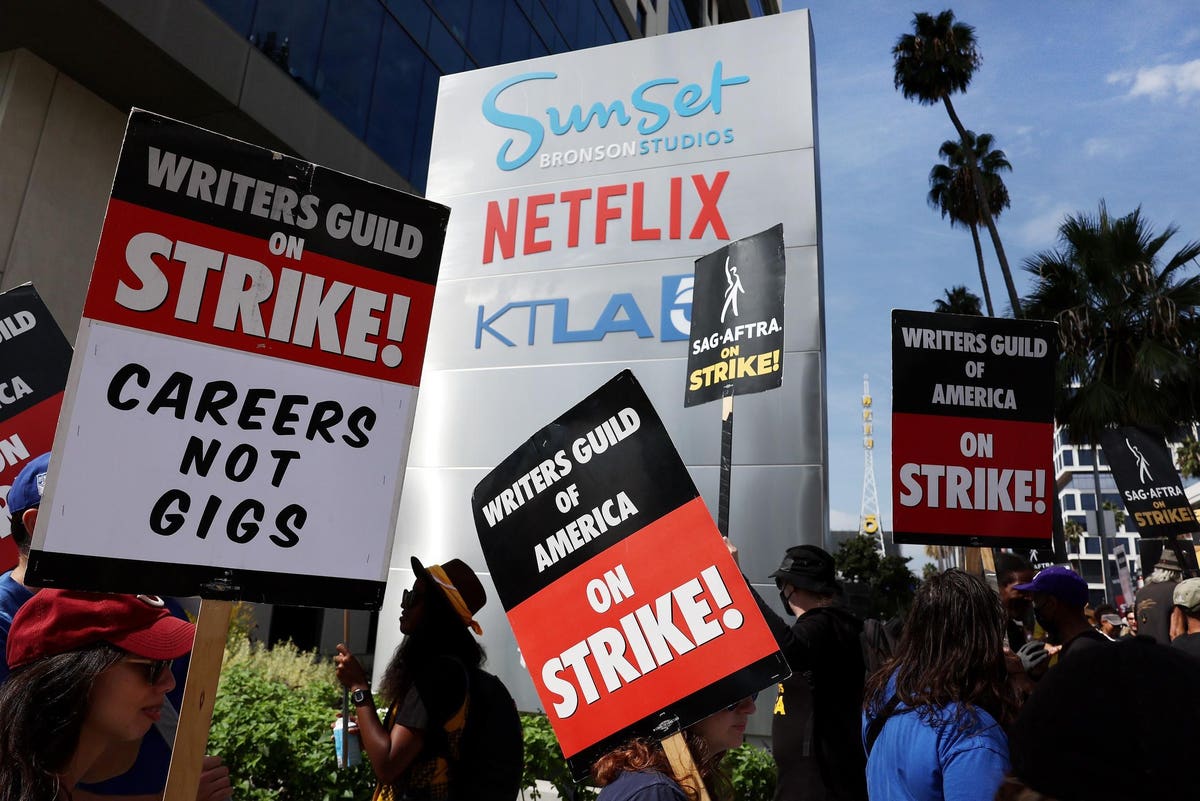With a sigh of relief from all sides, the WGA strike has come to an end with an unprecedented summary of terms that indicate that the time of solidarity and suffering is worth it. But the fight is not over, and business is not as usual…quite yet.
The WGA’s MBA deal terms, announced earlier this week, offer a number of key improvements, including increased minimum fees for writers, protective measures around the use of AI, improved work conditions and improved residuals. The deal terms also offer to provide real transparency in data around streaming performance that should equip writers with improved terms in the future.
These wins strike a chord with the array of picketers who held their signs high for months —from Netflix
NFLX
Despite this historic win for WGA, many of our favorite shows won’t be returning just yet. Here are a few obstacles that need to be addressed before regularly scheduled content hits the TV screen once again:
SAG-AFTRA Is Still On Strike
There is still another strike with SAG-AFTRA in effect. Although the WGA resolutions seem to lay the groundwork for a resolve with SAG, the issues surrounding AI and the residuals may not work for the actors in the exact same way. While the industry is hoping for a swift resolution, real production plans cannot crystallize until the SAG strike is also over.
Scheduling Is A Nightmare
Take a six-month backlog and compound it with a stream of independent films that are currently able to shoot on a SAG waiver and you have a universal scheduling nightmare with on-camera talent. While traditionally, larger TV shows have several actors in “first position” (or having them on call to show up to set when needed), the complexity of the strike and the sensitivity to work with talent who may have multiple commitments underway is causing a logistical disaster. Studios across town are literally using a whiteboard to figure out when their talent can actually shoot in order to get cameras rolling.
It Is Unclear What Talent Relations (and Negotiations) Will Look Like Between the Laborer and the Studio
While the WGA strike is resolved, the tone of frustration this year cannot simply disappear. Laborers felt that they had to “fight” hard to have their voices heard and needs met. Even with a resolution in place, this approach may not subside as studios and networks try to negotiate deals with writers and actors moving forward The talent reps may use the baseline victory of the WGA strike wins as a conceptual starting point to push on all former precedent negotiations, which can cause a potential delay in being able to secure the level of talent that is needed to make a show.
Mandates Are Still Shifting Across Most Networks and Streamers
The strike has been a convenient and real excuse for streamers and networks to reassess their mandates and objectives around programming. There has been an existential shift in the past few years from simply launching a streaming service to understanding the profitability around the service itself. The idea of quantitatively providing as much content as possible on the platform is being outweighed by identifying high-level strategic shows that engage and maintain subscribers. This is causing most streamers and networks to look at their internal legacy projects and IP and not be so quick to buy a mass number of series or over extensive episode orders.
In these turbulent times, only one thing’s for certain. The strike may be over, but the real work is about to begin, so we can all start binge watching soon.
Read the full article here





